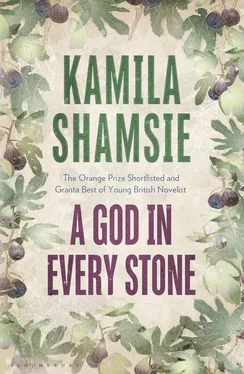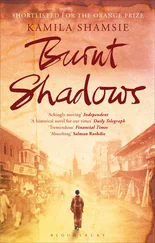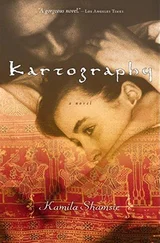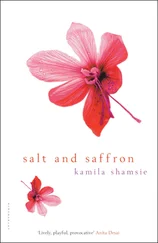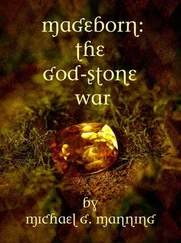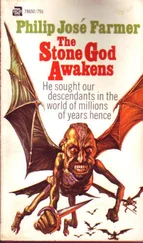— What treasure?
— The Circlet of Scylax. Remember Scylax from our first lesson?
— Of course. The Shade Man.
— The Emperor Darius so trusted him that he gave him a circlet — that’s like a crown — decorated with figs. It was a special kind of circlet, reserved for heroes and men who slay monsters. Though the fig part was unique to Scylax. Long after Scylax died, his home of Caria was ruled by a dynasty called the Hecatomnids who had the Circlet as one of their prized possessions, and stamped it onto their coins.
— And then what happened to it?
— There’s the question. Alexander conquered Caria in 334 BC, the Hecatomnid period ended, and there’s no further record of the Circlet. Except this.
She picked a slim, leather-bound book off the grass and, opening it to the right page, turned it towards him.
— The Fragments of Kallistos. He was a Byzantine historian, who didn’t think to leave the great work of his life in a place where the moths wouldn’t nibble on it. Read what’s there; I’m getting more ice.
She stood, hoisted up the steel tub placed halfway between her chair and his desk, and sloshed the cold water within it onto his bare feet, to exclamations of delight. When she returned a few minutes later, ice steaming within the tub, she would have welcomed Najeeb’s assistance in carrying the weight of it across the garden but he was bent over Kallistos, in the shade of the weeping willow, his concentration too beautiful to disrupt.
— So that’s why, he cried out, looking up.
— Why what?
— Why you always spend so much time in the Museum looking at that ugly thing.
— What have you found in there?
She walked round to his side of the table, picked up the book and balanced it on his head as she read words she hadn’t looked at in years.
She led the holy men to the Sacred Casket mounted with the Holy One which contained the Relics but they would not be tempted. Their mission was not one of theft, and they trusted the Casket would come under divine protection. She next implored them to take the great traveller’s crown of figs which was in her safekeeping, but they saw no reason to carry something which had no value to them so she went outside and buried the crown at the base of the Great Statue of the Holy One. The light of the Holy One illuminated her task, so those who watched knew this was the right course of action.
The book shifted, fell against her torso as Najeeb tipped his head back to look at her.
— I guessed right, didn’t I? The Sacred Casket is the Kanishka Casket. And the crown of figs is buried beneath a statue somewhere near where the casket was found? Somewhere in Shahji-ki-Dheri?
— A relic casket mounted with a holy figure? You could find a thousand objects scattered around the world which match that description. And most of them would probably have a statue in the vicinity.
He looked so disappointed she tugged a lock of his hair and said, No one’s found the circlet in the eighty years since Kallistos’ Fragments were rediscovered in a church attic. It would almost be rude to those who’ve tried for decades if an eleven-year-old ferreted out its location with a single glance.
— I’m twelve now.
— Are you? When did that happen?
— Last month.
— Why didn’t you say? Put your books away immediately. We’re going to find you some cake. Oh, and here — happy birthday.
She placed the stupa shard in his hand. He looked up at her, not understanding, and she said, Well, why shouldn’t you have it. It’s your history after all, Pactyike.
Najeeb ran his thumb over Atlas’ wrist, a shimmer to his eyes which it took her a moment to recognise as tears. She could see it had been pleasing before, this piece of Gandharan art, but now that it lay in his palm, transformed into both gift and heritage, it had become precious. Together with the promise of cake it had entirely wiped Kallistos from his mind.
Viv knew this about Tahsin Bey: he wasn’t reckless or foolish or lazy. A relic casket with a Buddha on top wouldn’t be enough to make him set aside his dreams of finding the Circlet in Labraunda in favour of a stupa that wasn’t built until five hundred years after the Circlet vanished from history. So there was something else; something he’d been certain she would work out if he just pointed her in the direction of Peshawar. Caspatyrus! Where journeys begin and end . Not her journey — the journey of the Circlet.
She bit down on her forkful of cake, watched Najeeb press his thumb against one of the few crumbs remaining on his plate and lift it to his mouth. The other patrons of the tea-shop — Indian and English both — kept glancing over at their table. She swapped around plates, gave him the slice she’d barely touched. It wasn’t generosity; when he was eating he wasn’t talking, and she needed to think.
How would a prized artefact of the Carian dynasts end up in Peshawar? And then came the answer, so obvious, so inevitable. Alexander. Of course. He would have taken the Circlet from Caria when he conquered it and carried it all the way to India — where he sent his Admiral Nearchus to sail down the Indus, following in the oarstrokes of Scylax.
— Najeeb Gul, you are a wonder!
The boy looked up, mouth full of cake; in the tea-room, whispers.
Returning home, she knew exactly the book she needed. Buddhist Records of the Western World — an account of several Chinese travellers’ visits to India, and to Shahji-ki-Dheri. She’d read it soon after she’d arrived in Peshawar but without knowing what she was looking for despite Tahsin Bey’s insertion of the words ‘Sacred Casket’ into his letter, which she should have recognised as an echo of Kallistos. Although really, he could have been a little more forthcoming.Regardless, now that she was sitting at Najeeb’s school desk in the garden with the book open in front of her, it seemed impossible she’d missed it: In ad 518 the Chinese pilgrim Sung-Yun travelled in the company of a Buddhist novice to India on the instructions of the Empress of China, in order to bring back Buddhist holy books from a country now ravaged by ‘a rude horde of Turks’. Tahsin Bey would have laughed at that, read it out loud to whoever was near by to listen — even if it was only Alice. Or perhaps he would be too absorbed, instead, in his conviction that Sung-Yun and his companion were the Holy Men whose ‘mission was not that of theft’. She read all that Sung-Yun had written of Shahji-ki-Dheri, and moved on to the writings of Hiuen-Tsang, more than a century later. The rude horde of Turks and their descendants had worked their destruction — where Sung-Yun found temples and stupas, Hiuen-Tsang found ruins. But the Kanishka Stupa survived and –
To the south-west of the Great Stupa a hundred paces or so, there is a figure of Buddha in white stone about eighteen feet high. It is a standing figure, and looks to the north. It has many spiritual powers, and diffuses a brilliant light.
The Sacred Casket. The Likeness of the Holy One. The Holy Men. The Illuminating Statue. It was all there, every bit of it.
The last excavation at Shahji-ki-Dheri had taken place in 1911. Every year since then the Archaeological Survey of India, Frontier Circle reported a continuing leasing dispute with the owner of the land. The most recent report was promising — ‘the compulsory acquisition of the land may be considered’. Viv looked up the Land Acquisitions Act — there was no reason it couldn’t be applied to Shahji-ki-Dheri. Perhaps all that was needed was a little nudge from the right quarters.
— There’s something here that’s caught my attention, Mr Remmick, I wonder if you could advise me how to move forward with it.
She made a fluttering motion to indicate some flight of fancy, leaning forward slightly towards Remmick who turned an even deeper shade of red. They were the only two sitting on the verandah of the Peshawar Club, gin-and-tonics in hand, watching the sky turn a fiery orange.
Читать дальше
